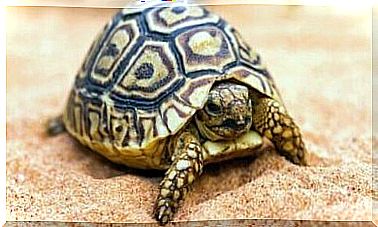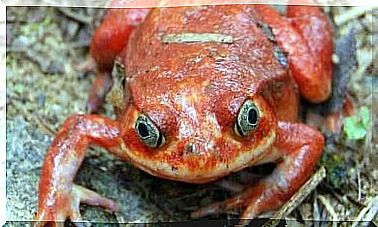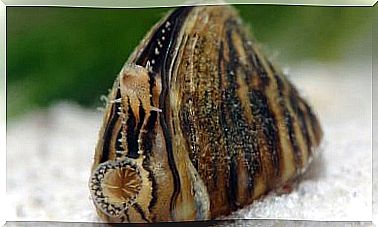The World Through The Eyes Of The Cat
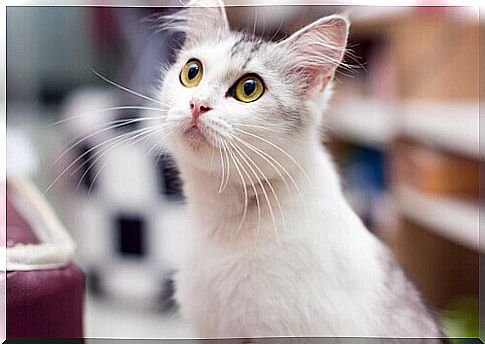
If you own a cat, you will know that it enjoys excellent night vision. But beyond that, you must have wondered how your friend sees and perceives the world. Since man never stops studying his surroundings, he has also done research in this sense, to try to understand how felines see the world: this is how they discovered that the eyes of this animal have many things in common with ours, but also some differences.
Special features of the cat’s eyes
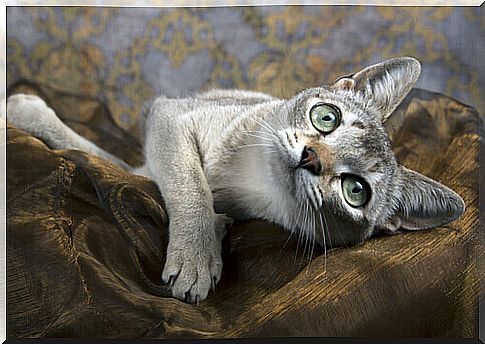
The cat’s eyes are made in such a way as to allow him to see well especially in semi-darkness or semi-darkness situations. This ability is the inheritance of a trait developed by its ancestors, who necessarily had to devote more time to hunting, for their survival: the fact that they had to hunt even during the night hours meant that the eyes of the felines adapted to these conditions, to the point of allowing him to see six to eight times better than people.
Here are some peculiarities regarding the sight of the cat:
- Although people and cats share the same types of cells involved in the vision process (rods and cones), they are distributed differently. In the cat’s eyes, for example, there are more rods, which are able to capture more brightness and are sensitive to color. Also, they become saturated when they get too much light. This is one of the reasons why the cat sees better when it is dark, but it is also the reason why, during the day, it sees everything too bright, as if the world were wrapped in a white film. Our eyes, on the other hand, have a greater number of cones, which allow us to distinguish bright colors.
- The cat’s rods are not directly connected to the optic nerve : they are, first of all, connected to each other, thus forming small groups of cells. This makes his eyes able to see well even in dim or semi-darkness, conditions in which the human eye is practically useless.
- On the other hand, during the day, the cat’s eyes do not send specific information on which rods are being stimulated, which is why the cat has more blurred daytime vision.
- Furthermore, the predominance of rods over cones means that the cat is able to see very accurately the rapid movements, which to his eyes appear slower than they actually are. However, at the same time, they perceive slow movements with greater difficulty, to the point that what is moving may even seem immobile.
Color and focus
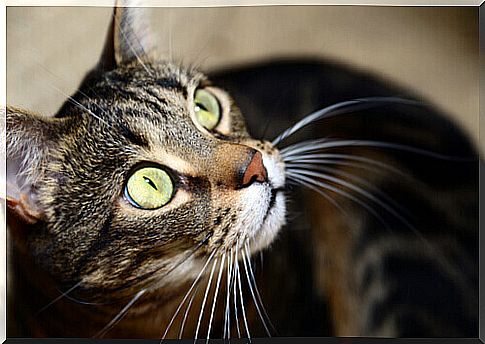
Our feline friends do not have a great interest in colors, as is the case with most mammals: the exception to the rule seems to be us, and the primates.
The eyes of human beings, in fact, have three cones that function as color receptors: red, green and blue. Cats and dogs, on the other hand, lack the red cone. As for felines, we can say that they are dichromatic : their cones are able to distinguish only wavelengths ranging from 450 to 454 nanometers (violet blue) and from 550 to 561 nanometers (yellow green). Studies have recently been conducted that would indicate the presence of a third cone, capable of accentuating the green color. In any case, the vision of cats lacks the red color and, in general, the shades that are perceived by these animals are less bright than those perceived by us.
In relation to the size of the head, the cat’s eyes are much larger than ours, a further factor that contributes to better night vision. Despite this, this feature compromises the cat’s ability to focus closely: they are unable, in fact, to focus on objects that are less than 30 cm from them. Fortunately, in these cases the mustache comes into play and everything is compensated: these in fact work like radars and allow him to identify the objects that surround him.
The last aspect in which feline and human vision differ is that the cat has a field of view of 200 degrees, while we have one of only 180, and as far as peripheral vision is concerned, our furry friends boast one. 30 degrees while we are satisfied with 20.
However, technical data aside, scientists and scholars have not yet managed to “enter” a cat’s head, in order to understand how this animal decodes the information that comes to it through its senses and thus explain to us how it sees and conceives the way.

